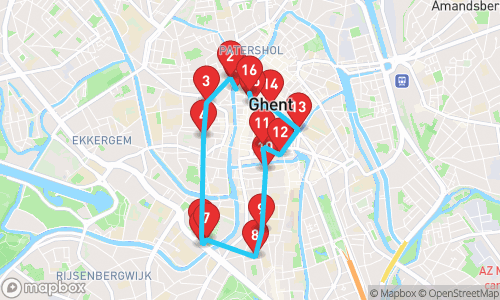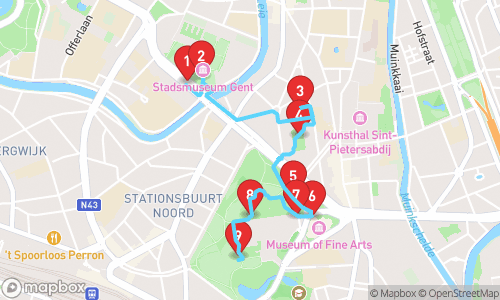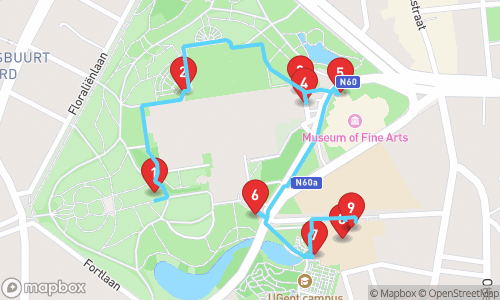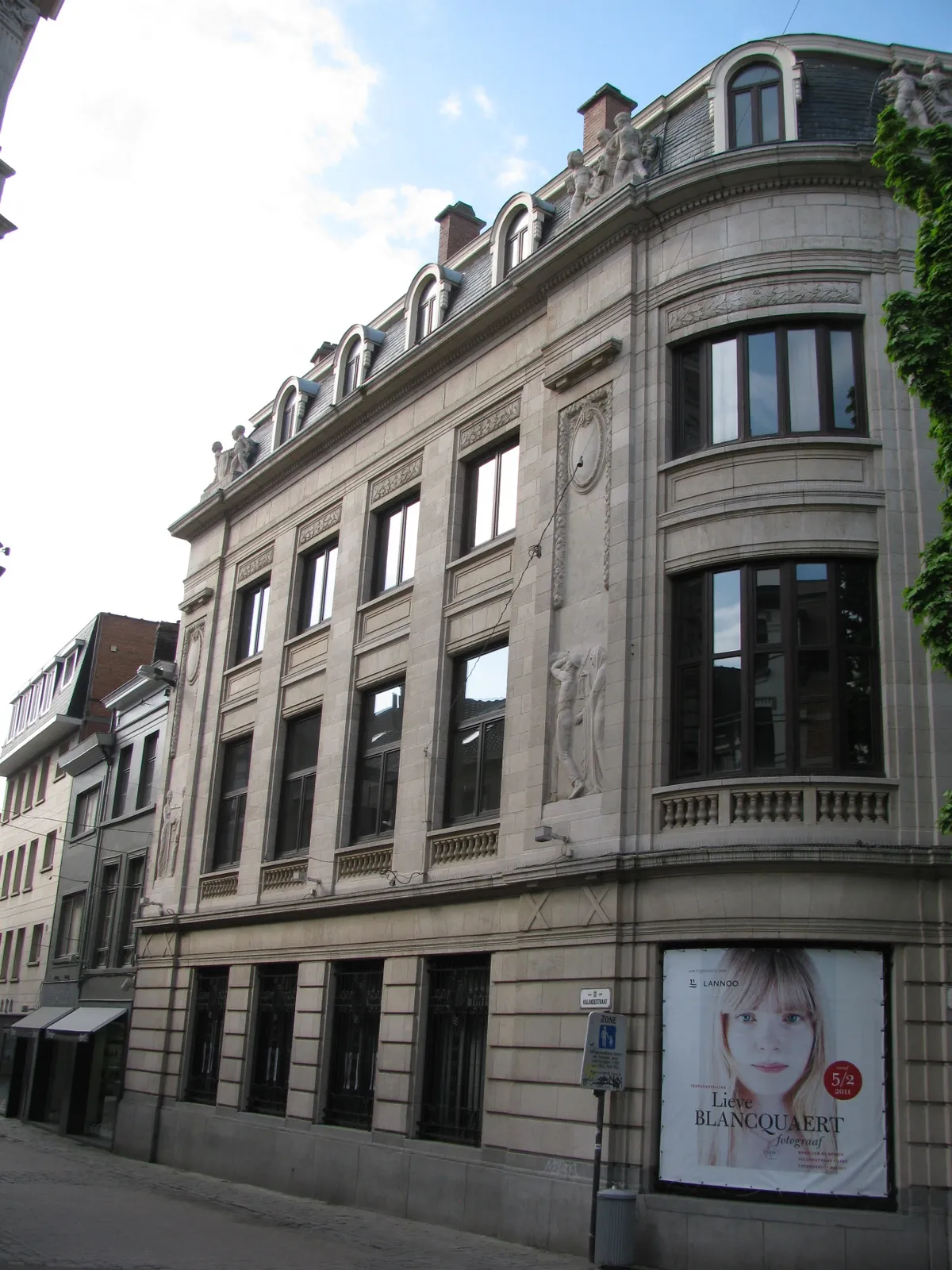

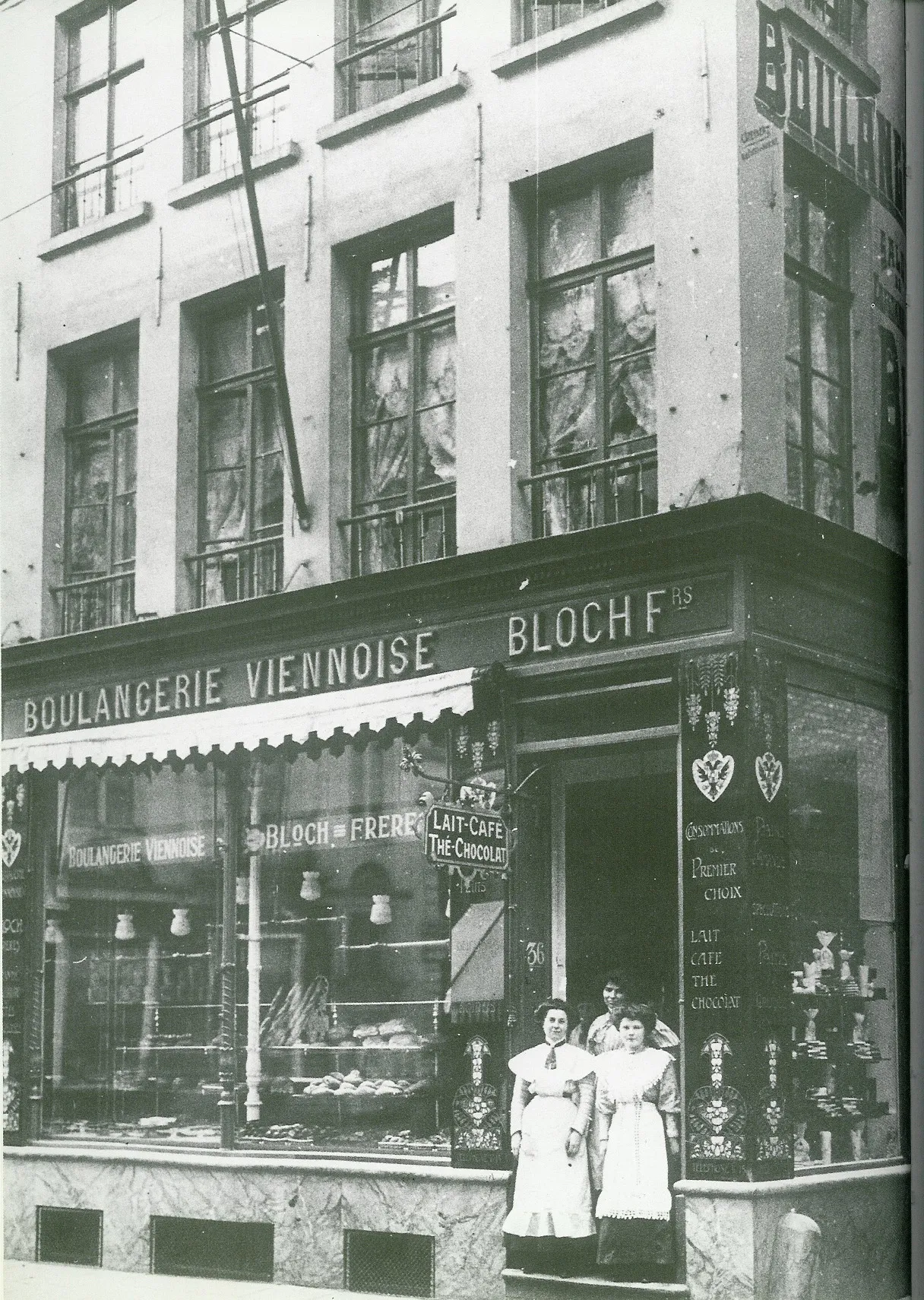

Ghent's Medieval Mastery: A Time-Traveling Adventure

Tour Guide
Ryan Multilingual
Welcome to Gent! On this GPS guided audio tour, we will visit 17 stops on a route of 2.05km. This tour focusses mainly on general tourism.
Locatello is an app where you can generate personal audio guided tours. Set your preferred distance, guide, language and theme, and a guided tour is created on the spot.
Walking Time
Distance
stops
Language
Tour Stops

Bank van de Arbeid
A former Belgian bank built in 1920 in Gent, featuring decorative elements and preserved interior.

Jezuïetenklooster
A former monastery complex of the Society of Jesus, located in Drongen, containing a neogothic chapel built in 1878, a retrait house, and a former novitiate and college.

Bakkerij Bloch
A historic bakery, Bakkerij Bloch, was a well-known bread and pastry shop in Gent, Belgium, operating for almost 109 years until it closed in 2008. The shop reopened in 2020 in a new location, retaining its traditional expertise and charm.

Berg van Barmhartigheid (Gent)
A historic building at Abrahamsstraat, Gent, serving as a former mercy house and notable for being the first Baroque construction in Gent, featuring a white natural stone exterior resembling an Italian palace and ornate Baroque details.
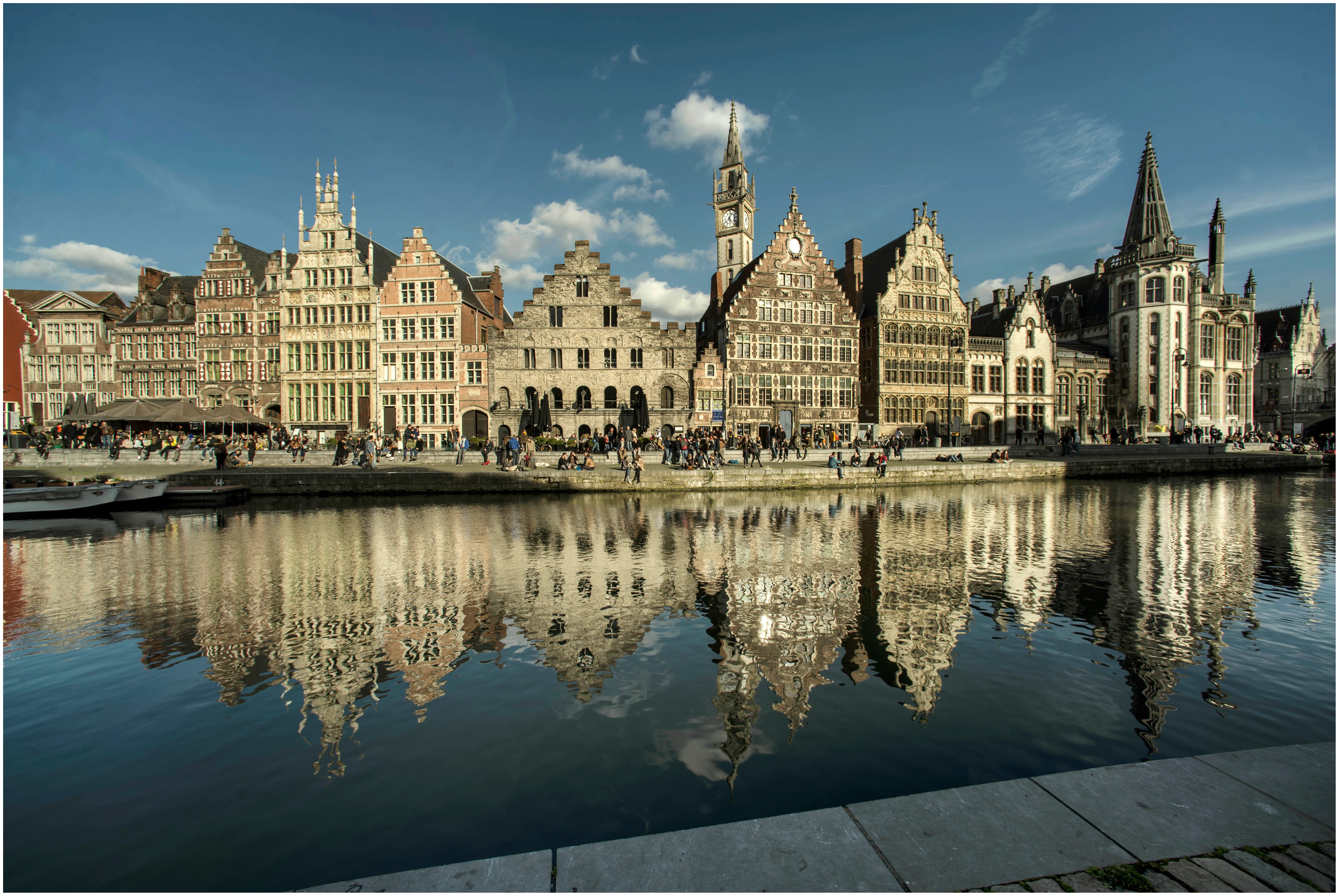
Korenstapelhuis
A medieval grain storehouse, also known as the Spijker or Maison de l'Étape du Blé, built in the 12th century and classified as a historical monument since 1943. It served as an entrepôt for cereals transported along the Lys river until 1734.
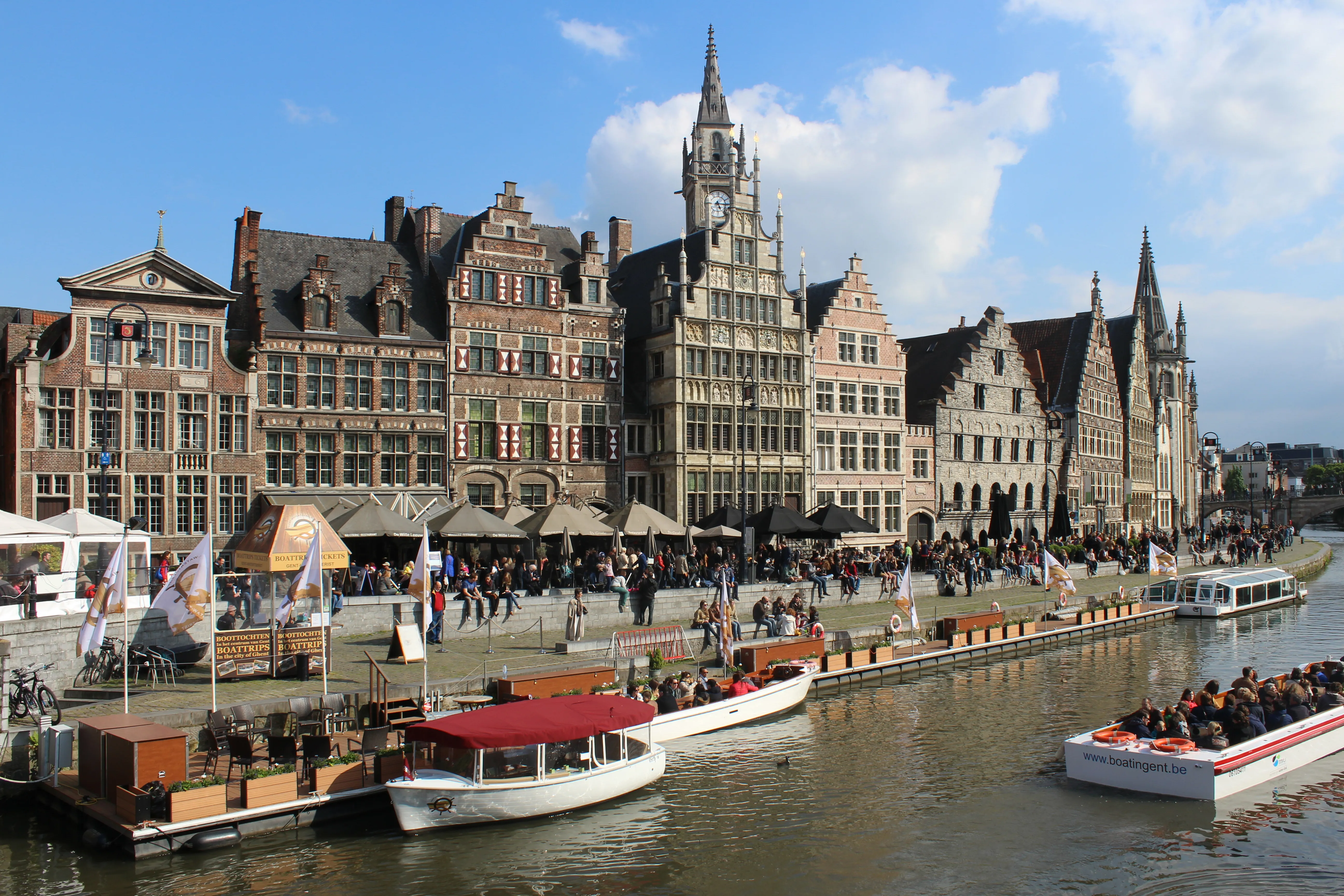
Graslei
A historic quay in Ghent's city center, Graslei is a cultural and touristic hotspot with a high concentration of café patios, featuring a unique row of historical buildings, many dating back to the Middle Ages, and a protected cityscape.
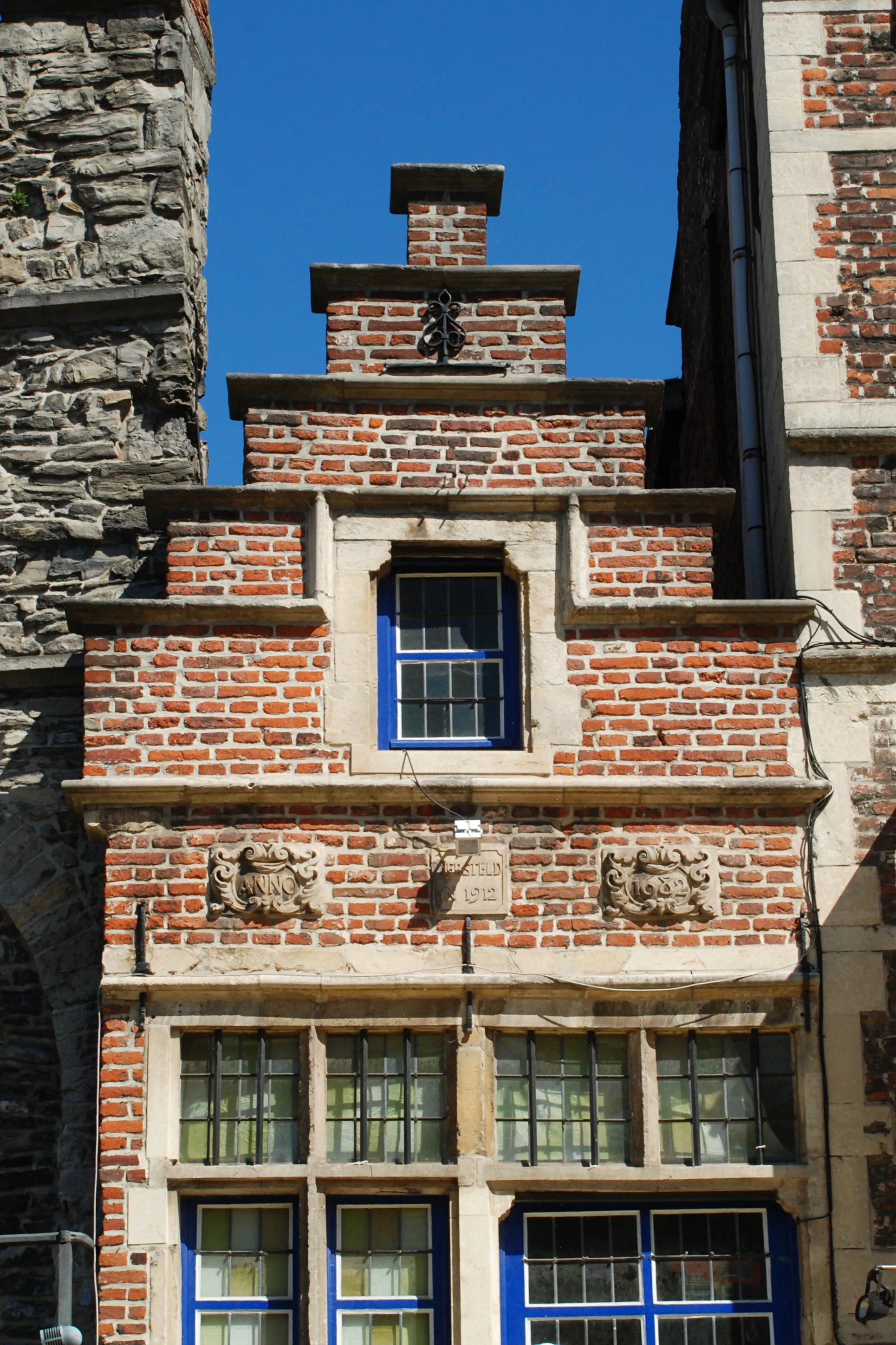
Tolhuisje
A 17th-century house, known as Tolhuisje, is the smallest house in Gent, standing on the Graslei. It dates back to the Middle Ages, served as a customs house, and has been restored and repurposed as a small café.
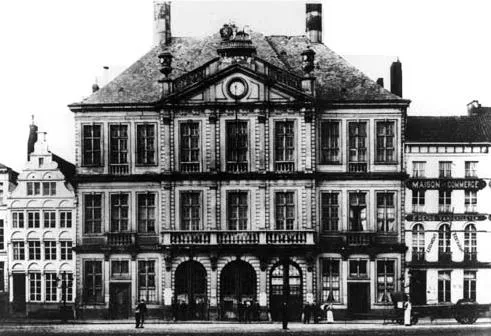
Pakhuis
A former building in Ghent, the Pakhuis was built in 1719 and served as a grain warehouse, customs house, and residence of the Kamer van Koophandel among other functions.
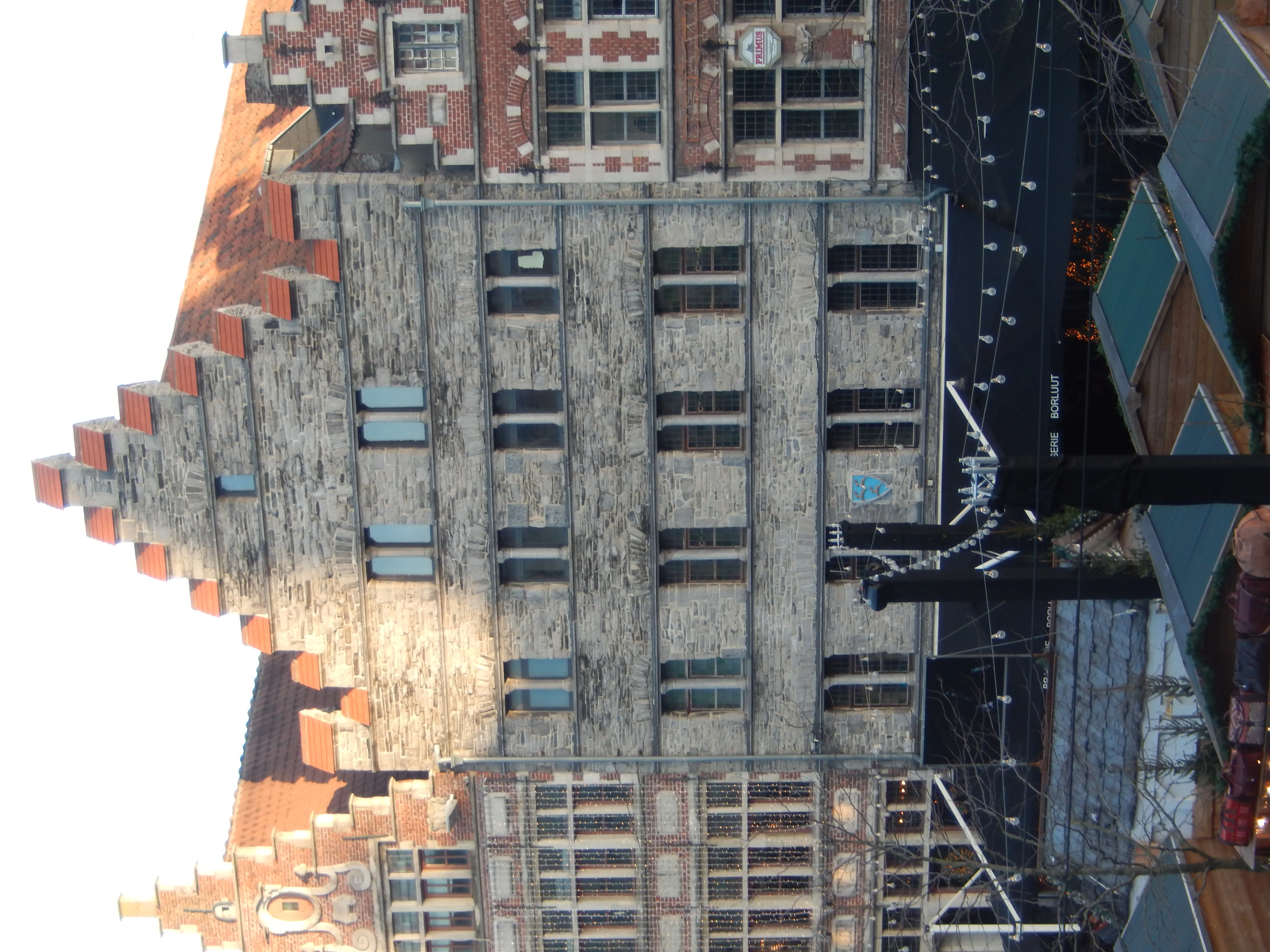
Borluutsteen
A medieval house built around 1175 from blue-grey limestone from Tournai, featuring a trapezoidal floor plan and a unique trap-gable facade with horizontal waterline decorations.
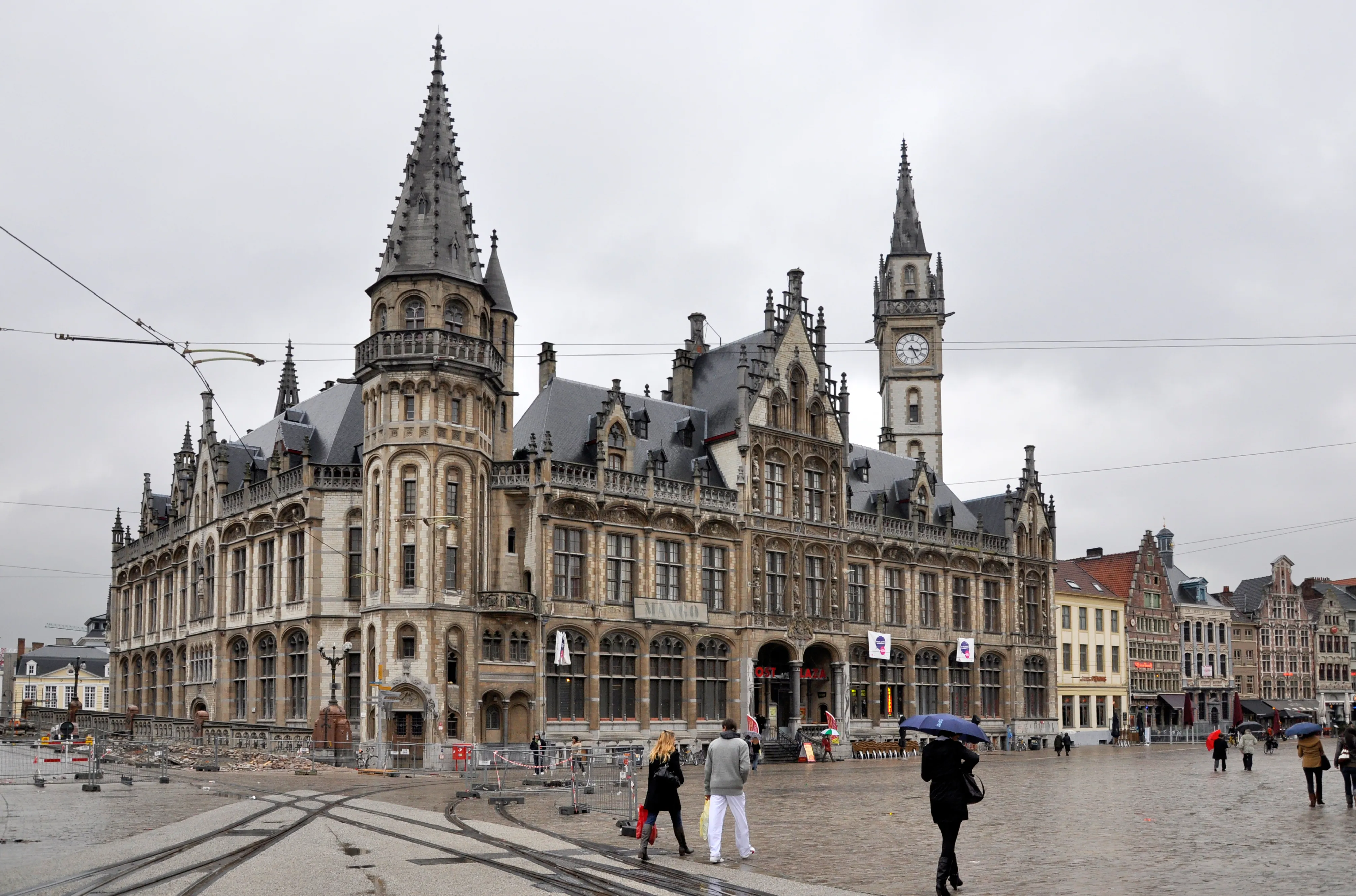
Old Postoffice
A monumental post office building featuring eclectic architecture with neogothic and neorenaissance influences, adorned with over 100 ornate figures, symbols, and coat of arms, representing Belgium, its colonies, and the five continents.
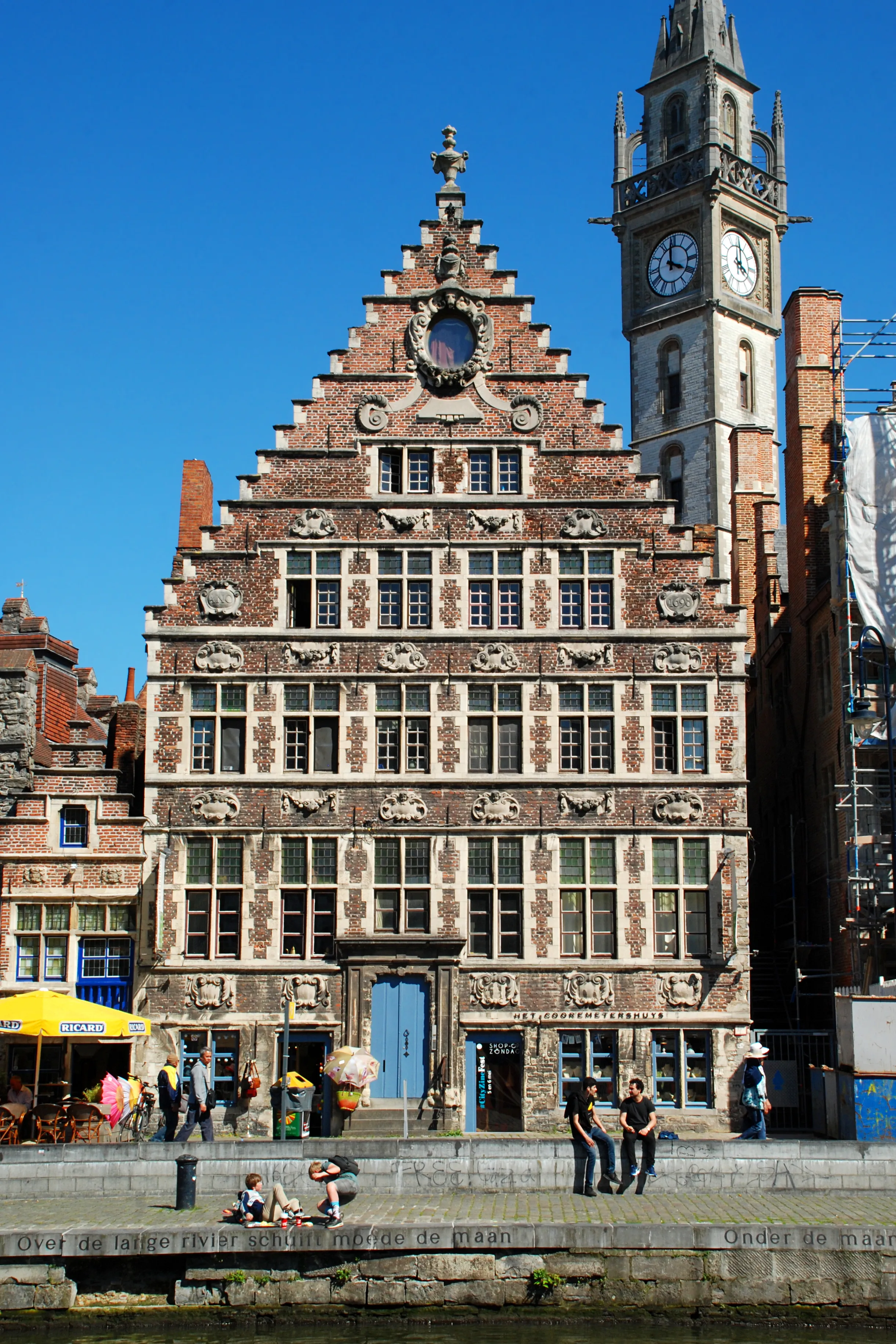
House of Grain Measurers
A 17th-century Renaissance-style house in Gand, classified as a monument historic, serving as the second house of the Grain Measurers' Corporation and featuring a facade with six travées, five levels of windows, and a blue stone entablement.
Audio Preview
30 sec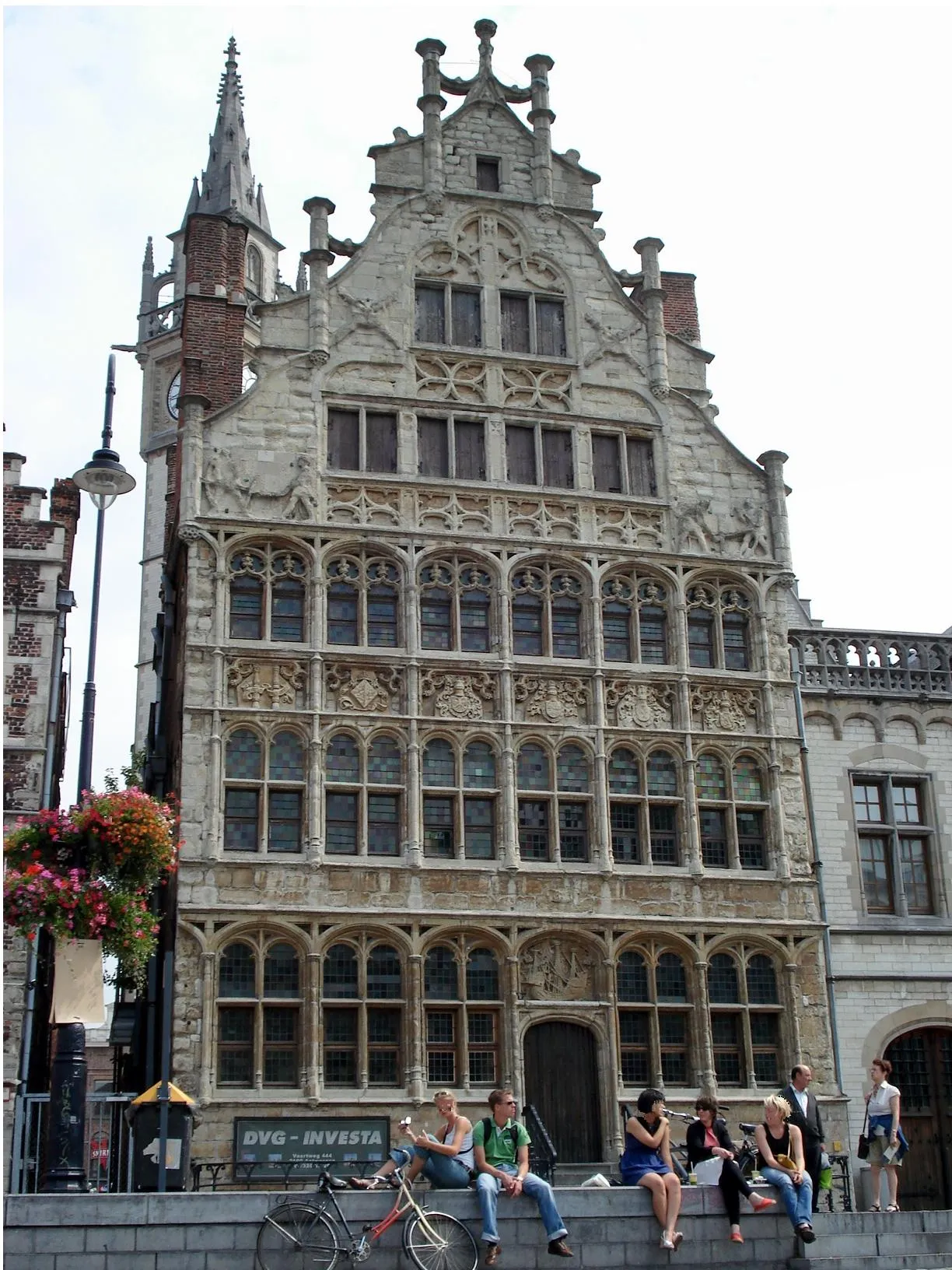
Gildehuis der Vrije Schippers
A gildhouse, formerly the property of the Molenaarsgilde, featuring a beautiful facade ornated with wapenschilden, devies, and beelden, showcasing the activities of the Vrije Schippers' guild.

Saint Michael
A bronze statue of St. Michael, the archangel, stands atop a central lantern on the St. Michael's Bridge, where he triumphs over a writhing dragon, referencing a dramatic biblical story.
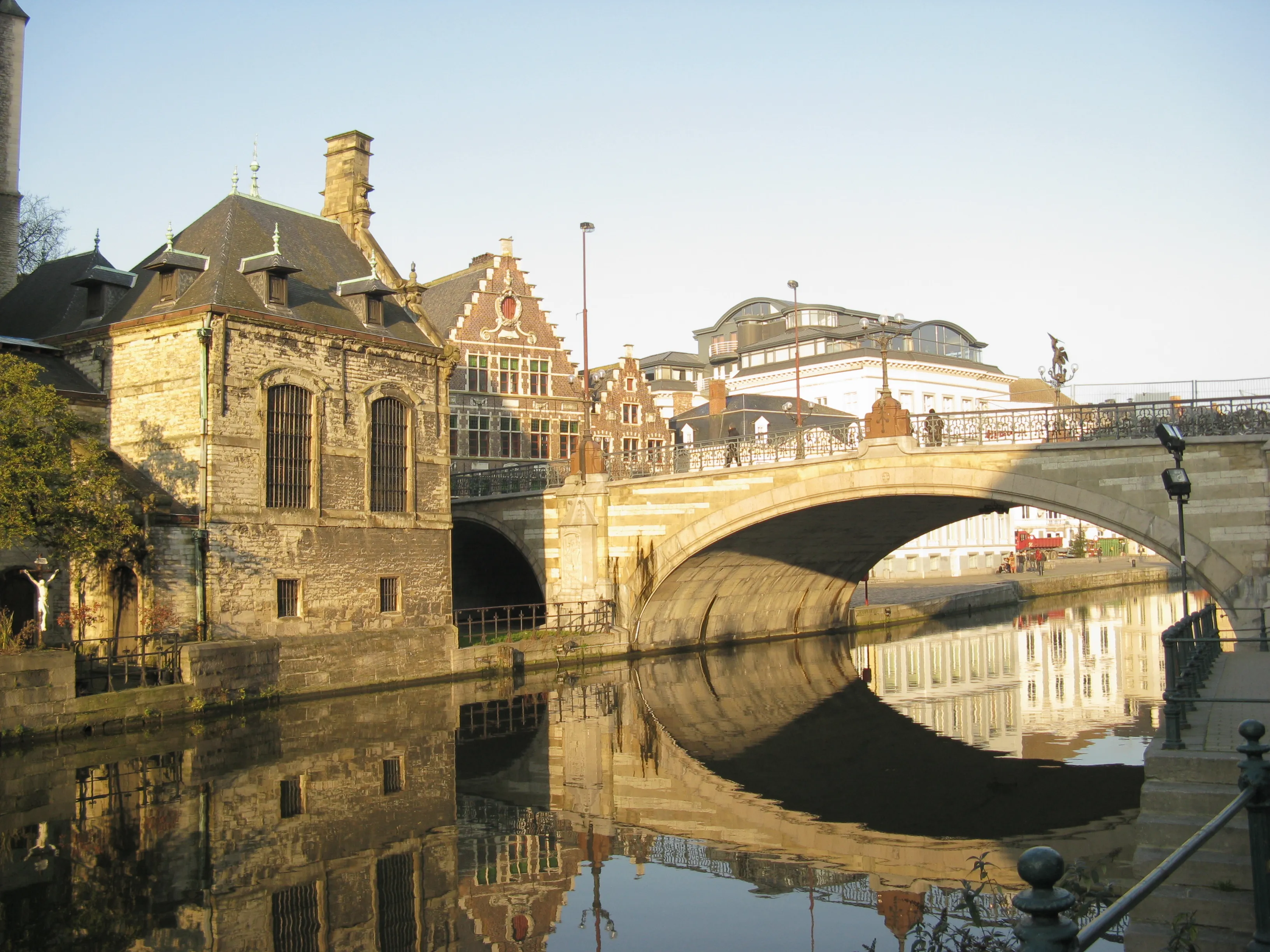
Sint-Michielsbrug
A historic stone arch bridge in the heart of Gent, spanning the Leie River, was built between 1905-1909 and designed by architect Louis Cloquet. The bridge is a prominent landmark offering stunning views of the Gras- and Korenlei, as well as the city's iconic towers. Since 1983, it has been protected as a monument.
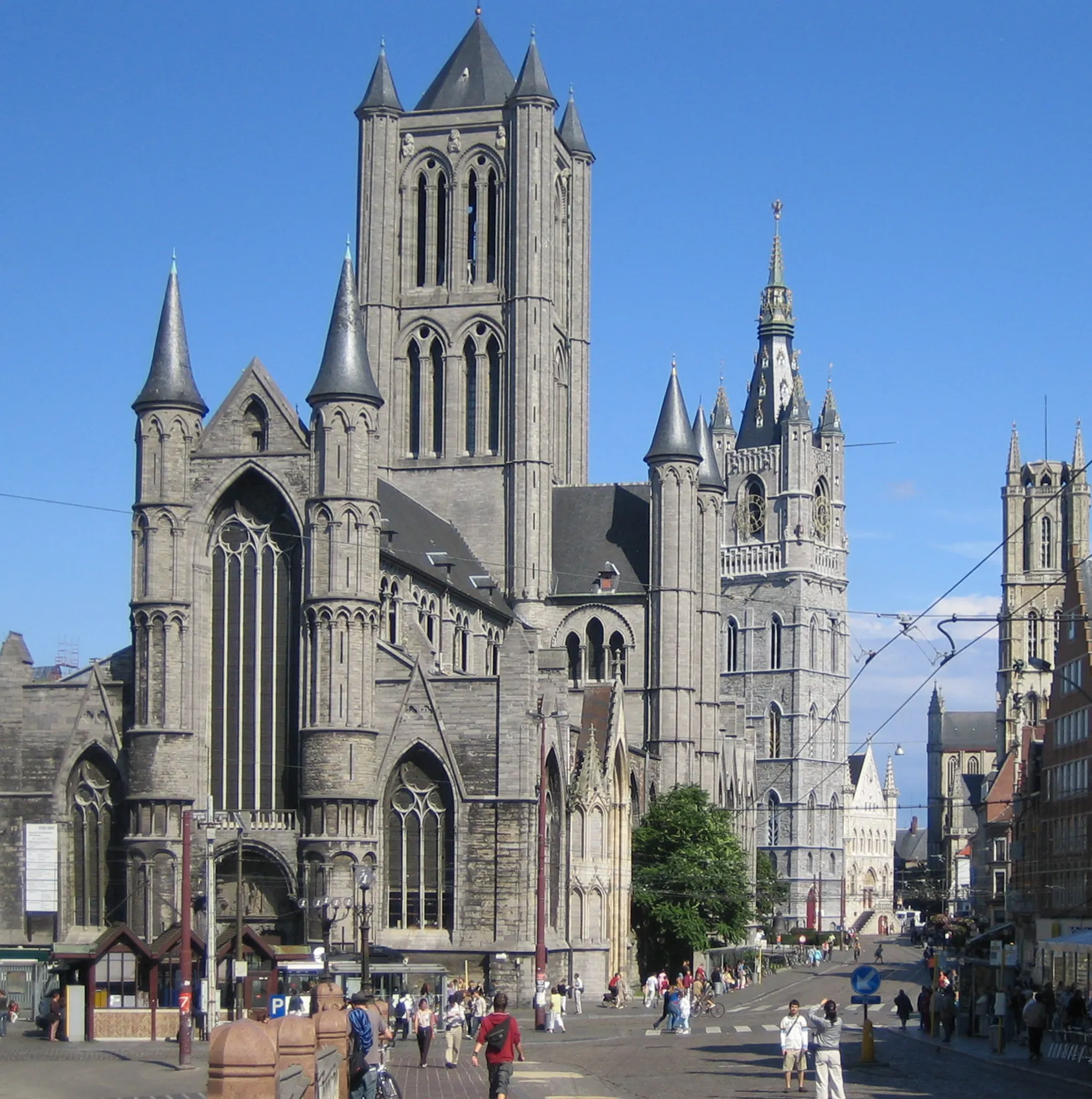
Saint Nicholas' Church
A historic church building dating back to the early 13th century, showcasing the Scheldt Gothic style with blue-gray stone, single large tower, and slender turrets.
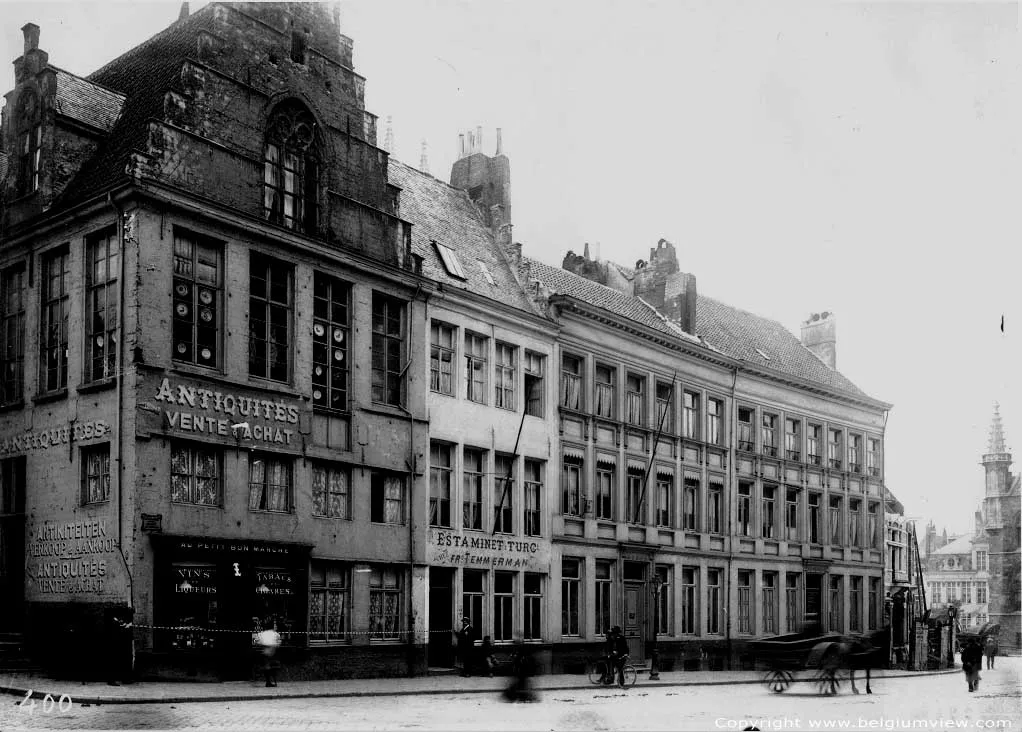
Sint-Jorishof
A historic building in Ghent, originally the court of the Crossbow Society, now functioning as a restaurant, brasserie, and event space after renovations.
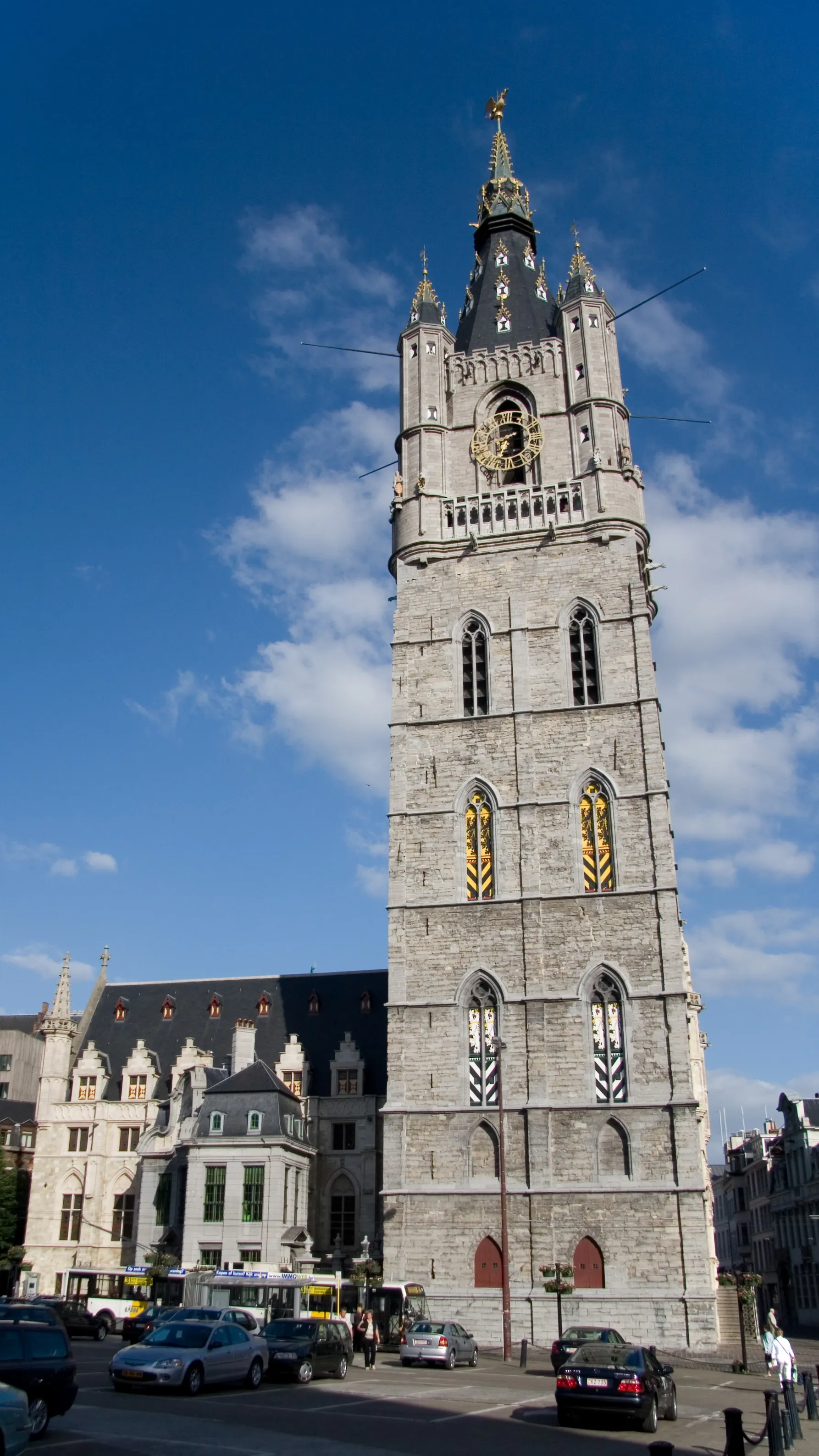
Belfry of Ghent
A medieval tower standing 91 meters tall, the Belfry of Ghent is the tallest in Belgium and part of the UNESCO World Heritage Site, Belfries of Belgium and France.
Download App
Experience this tour and many more with our mobile app. Available for iOS and Android.
Audio Preview
Tour Map
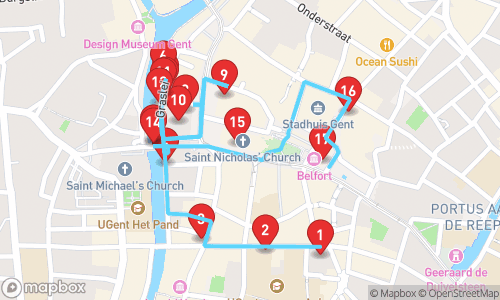
Quick Facts
- ✓GPS-guided navigation
- ✓Professional audio narration
- ✓Offline maps available
- ✓Free to try
Why Choose This Tour
Expert Local Guide
Narrated by Jenny Multilingual, specializing in general tourism
Flexible Timing
Take the tour at your own pace, any time of day
